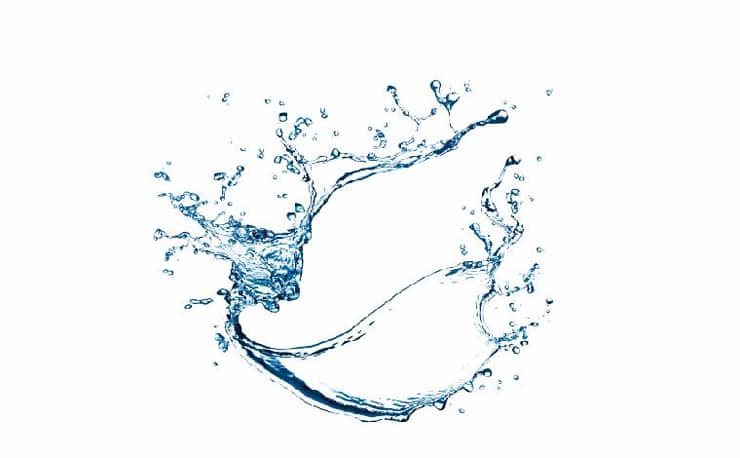Hyaluronic acid is, together with proteoglycans and collagen fibers, one of the main components of the extracellular matrix of the skin.
Chemically it can be defined as a glucosaminoglycan from the non-branched polysaccharide chain produced by the condensation of thousands of disaccharide units formed in turn by glucuronic and N-acetylglucosamine acids linked together, alternatively, by glycosidic bonds and by intramolecular hydrogen bonds which stabilize their conformations. At a physiological pH, the carboxyl groups of the glucuronic units are ionized, giving the hyaluronate molecule a high polarity and consequently a high water solubility. Thanks to this property, hyaluronate can be complex with many molecules of water reaching a high degree of hydration.
Sodium hyaluronate is the sodium salt of hyaluronic acid. Present naturally in humans in parts like cartilage or skin; hyaluronic acid will have many medical applications. Here are the main applications of sodium hyaluronate and hyaluronic acid.
With time, the natural ability of our body to produce hyaluronic acid decreases with consequent and progressive aging of the skin and therefore the appearance of wrinkles of expression and loss of elasticity of the tissues.
Sodium hyaluronic acid can form a thin, light, permeable, invisible, and viscoelastic film able to fix the hydration on the surface of the epidermis supporting its natural protection mechanism and giving it a fresh, smooth, velvety touch.
Recommended dosage: from 0.1 to 0.3% to be added hot (<60 ° C) after joining the two phases of the preparation; from 1 to 5% to be added cold if you use the gel prepared with 99% water and 1% sodium hyaluronate.
Sodium hyaluronate is one of the leading components of many effective cosmetic and cosmetic products. Among the most common forms are the following:
- Creams;
- Masks;
- Ointment;
- Shampoos;
- Gels;
- Injections;
- Vitamin complexes.
Also, it is an active component of cosmetic procedures that form the beauty, health, and youthfulness of the skin:
- Bio-reinforcement;
- Hyaluronoplasty;
- Biorevitalization;
- Mesotherapy;
- Fillers;
- Liposuction
It is important to note that products based on sodium hyaluronate must be used not only to combat the pronounced processes of aging and destruction of the skin. Sodium hyaluronic acid is very effective in preventing wrinkles. Systemic and long-term use of the substance will allow for a long time to keep the skin young, creating a natural barrier to destructive factors. Enhancing the positive effect of sodium hyaluronate can be supplemented with a complex of anti-age and protective components.
Anti-arthritic
Hyaluronic acid is a gel that can be synthesized either by extraction of rooster ridges and chemical treatment, isolation, and purification or by bacterial fermentation. Hyaluronic acid is used as a medicine against osteoarthritis of the knee and joints by injection of an intra-articular fluid formulation. By boosting the viscosity of the synovial fluid and making the cartilage more flexible, sodium hyaluronate effectively heals rheumatic inflammation of the knee and protects the joints by greatly reducing pain.
Eye drops & eye care
In combination with vitamin B12, sodium hyaluronate synthetically obtained by bacterial fermentation forms an effective ophthalmic mixture for the hydration and lubrication of the eye due to dryness caused by chemical attack, dust, or fatigue. Hyaluronic Acid is an excellent tissue replenisher and is used for post-ophthalmological cataract, cornea, or glaucoma care.
Beauty care
Hyaluronic acid is used to fill sagging and relaxed tissues with age, to increase the volume of the lips, for the treatment of scars caused by acne, and for the treatment of wrinkles. Like collagen, it is used for skin injections and gives identical results. The loss of elasticity of the skin due to age with the simultaneous appearance of wrinkles is due to the drop in hyaluronic acid. Hyaluronic acid is an excellent moisturizer and an effective anti-inflammatory. It calms the itching and burning, soothes the pain, and makes the skin smooth and soft. Also, with treatments using hyaluronic acid, the risk of allergies is greatly reduced because it is a natural compound.
Cancer monitoring
Hyaluronic acid levels have been correlated with the appearance of certain cancers such as those of the prostate and breast. Therefore, hyaluronic acid is used as a marker for monitoring the evolution of these cancers in patients.








